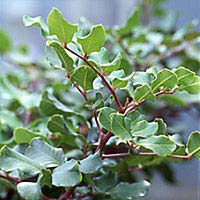Carob
Uses
Parts Used & Where Grown
Carob is originally from the Mediterranean region and the western part of Asia. Today it is grown mostly in Mediterranean countries. The gum from carob seeds is called locust bean gum. The dried, powdered pods of the plant are used in herbal medicine.
Our proprietary “Star-Rating” system was developed to help you easily understand the amount of scientific support behind each supplement in relation to a specific health condition. While there is no way to predict whether a vitamin, mineral, or herb will successfully treat or prevent associated health conditions, our unique ratings tell you how well these supplements are understood by the medical community, and whether studies have found them to be effective for other people.
For over a decade, our team has combed through thousands of research articles published in reputable journals. To help you make educated decisions, and to better understand controversial or confusing supplements, our medical experts have digested the science into these three easy-to-follow ratings. We hope this provides you with a helpful resource to make informed decisions towards your health and well-being.
3 Stars Reliable and relatively consistent scientific data showing a substantial health benefit.
2 Stars Contradictory, insufficient, or preliminary studies suggesting a health benefit or minimal health benefit.
1 Star For an herb, supported by traditional use but minimal or no scientific evidence. For a supplement, little scientific support.
This supplement has been used in connection with the following health conditions:
| Used for | Why |
|---|---|
|
2 Stars
Diarrhea
15 grams daily
|
Useful for treating diarrhea in adults, children, and infants, carob is rich in tannins that have an astringent or binding effect on the mucous membranes of the intestinal tract.
is rich in tannins that have an astringent or binding effect on the mucous membranes of the intestinal tract. A double-blind trial has suggested it may be particularly useful for young children and infants with diarrhea. Some healthcare professionals recommend 15 grams of carob powder is mixed with applesauce (for flavor) when given to children. Carob can also be used for treating adult diarrhea. |
Traditional Use (May Not Be Supported by Scientific Studies)
Carob has long been eaten as food. John the Baptist is said to have eaten it, and thus it is sometimes called St. John’s bread. Powdered carob pods have been used to treat diarrhea for centuries.
How It Works
How It Works
The main constituents of carob are sugars and tannins. Carob tannins have an astringent effect in the gastrointestinal tract making them useful for treating diarrhea. They may also bind to (and thereby inactivate) toxins and inhibit growth of bacteria. The sugars make carob gummy and able to act as a thickener to absorb water—another action that may help decrease diarrhea. A double-blind clinical trial found carob useful for treating diarrhea in infants.1 A less rigorous trial showed it did not help adults with traveler’s diarrhea.2
How to Use It
Some trials have used up to 15 grams of carob powder for treating diarrhea in children.3 Adults should take at least 20 grams a day for treating diarrhea. The powder can be mixed in applesauce or with sweet potatoes. Carob should be taken with plenty of water. Please note that infant diarrhea must be monitored by a healthcare professional and that proper hydration with a high electrolyte fluid is critical during acute diarrhea.
Interactions
Interactions with Supplements, Foods, & Other Compounds
Interactions with Medicines
Side Effects
Side Effects
Carob is generally safe. Only rarely have allergic reactions been reported.
References
1. Leob H, Vandenplas Y, Wursch P, Guesry P. Tannin-rich carob pod for the treatment of acute-onset diarrhea. J Pediatr Gastroent Nutr 1989;8:480-5.
2. Hostettler M, Steffen R, Tschopp A. Efficacy of tolerability of insoluble carob fraction in the treatment of travellers' diarrhea. J Diarr Dis Res 1995;13:155-8.
3. Brown DJ. Herbal Prescriptions for Better Health. Rocklin, CA: Prima Publishing, 1996, 206.
Last Review: 04-14-2015

Copyright © 2025 TraceGains, Inc. All rights reserved.
Learn more about TraceGains, the company.
The information presented by TraceGains is for informational purposes only. It is based on scientific studies (human, animal, or in vitro), clinical experience, or traditional usage as cited in each article. The results reported may not necessarily occur in all individuals. For many of the conditions discussed, treatment with prescription or over the counter medication is also available. Consult your doctor, practitioner, and/or pharmacist for any health problem and before using any supplements or before making any changes in prescribed medications. Information expires December 2025.



